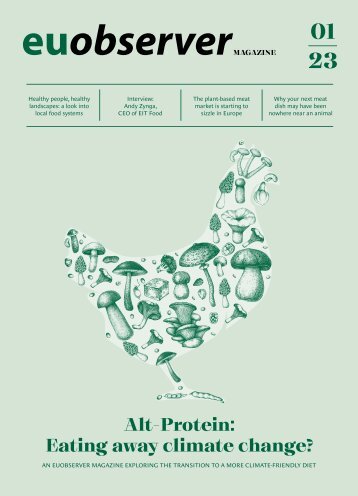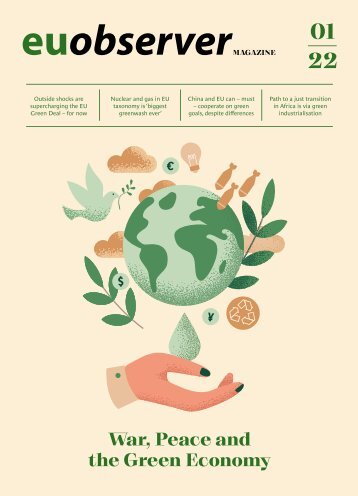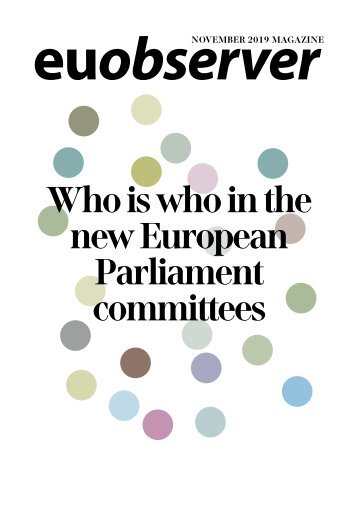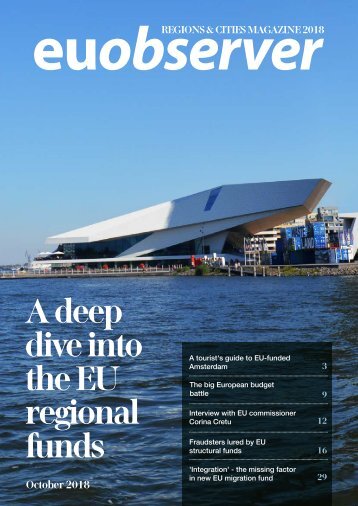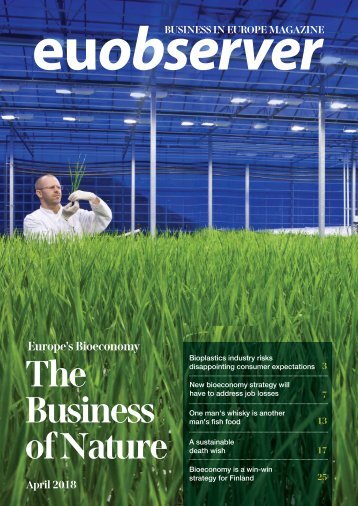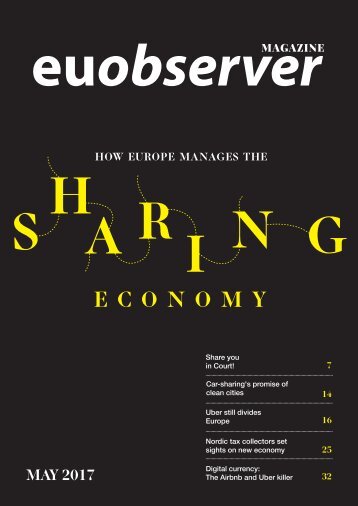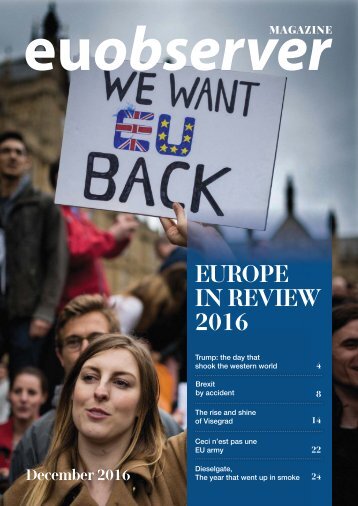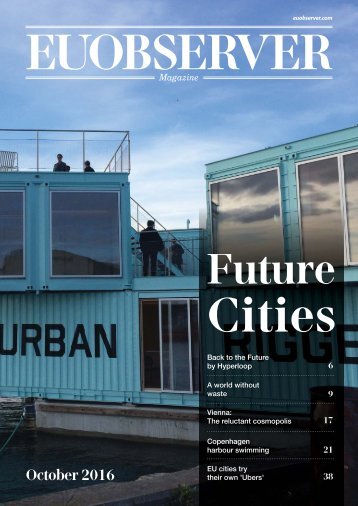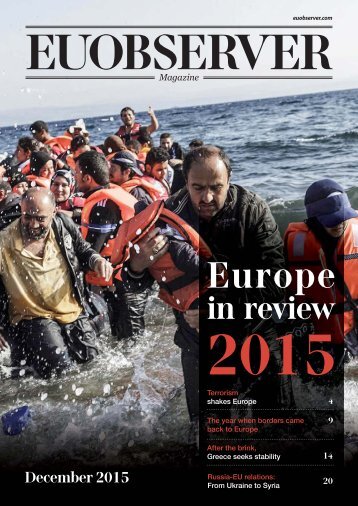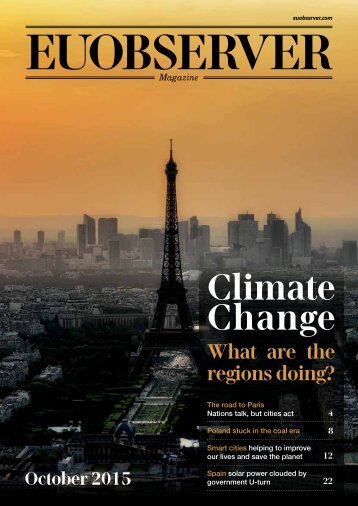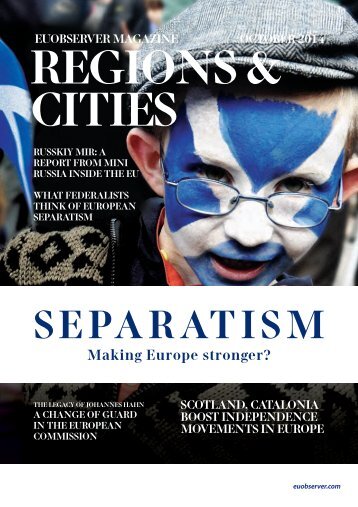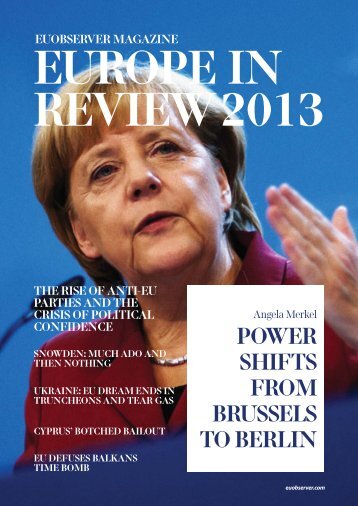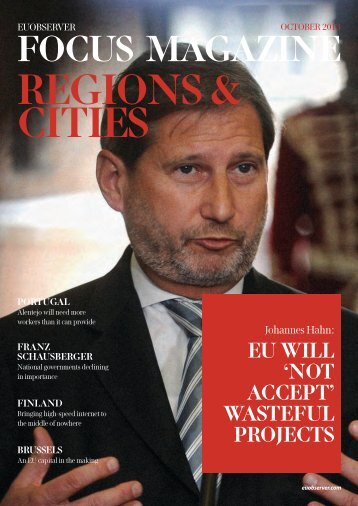Regions & Cities: The EU Agencies Race
- Text
- Regions
- Agencies
which deals with
which deals with trademarks, so also clinched the seat of the Agency for Health and Safety at Work. The EEA eventually went to Copenhagen. POLITICAL GAMES AND DECEIT The mega deal also involved the relocation of the Cedefop from Berlin to Thessaloniki, in Greece, something that was criticised by the agency's director, Ernst Piehl. "We have not been informed beforehand. … To the contrary: we have even been deceived," the Berliner Zeitung newspaper quoted him as saying in its 15 November 1993 edition. Piehl would leave the agency within a year. It was also a sensitive trade, so soon after the reunification of West and East Germany. Alexander Longolius, centre-left member of the state parliament of Berlin, said the desire to place the European Central Bank in the western part of Germany led to a "sacrifice of the anchoring of the European idea in eastern Germany". Problems continued to arise when a seat for a new agency was needed. According to Merijn Chamon of the Ghent European Law Institute, it was common in the 1990s that the decision on an agency's location was only dealt with after the agency had been established. He wrote in his book - EU Agencies: Legal and Political Limits to the Transformation of the EU Administration - that sometimes "the agency was provisionally located in Brussels, which hampered its functioning since it could not provide certainty to its (potential) functionaries on their actual place of work." managed to also secure the seat of the Agency for Health and Safety. Photo: oaosso 14 — REGIONS & CITIES OCTOBER 2017
Verhofstadt (r) and other EU leaders that the EU's food safety Photo: oaosso For example, when the European Commission proposed a Community Plant Variety Office (CVPO) in August 1990, the seat of the office was left open. The Council established the office in July 1994, but it wasn't until more than two years later that foreign affairs ministers decided the seat should be in Angers, France. The CVPO had already started its work in Brussels, and the relocation to Angers "was not done in a day", its annual report published in 1997 said. The report noted that one of the challenges was "keeping the staff and their families informed and motivated to make the move". THE FINNS DON'T KNOW WHAT PROSCIUTTO IS The most colourful account of how an agency seat was decided came after an EU summit in Laeken in December 2001. Reuters news agency quoted from a verbatim record, and saw then Italian prime minister Silvio Berlusconi clash with Belgian colleague Guy Verhofstadt, who was chairing the meeting, over the location of the European Food Safety Authority (Efsa). At that time, the Finnish capital of Helsinki was proposed. "Parma is synonymous with good cuisine. The Finns don't even know what prosciutto is. I cannot accept this," Berlusconi reportedly said in reaction. "The gastronomic attraction of a region is no argument for the allocation of an EU agency," replied Verhofstadt. German chancellor Gerhard Schroeder added: "I love Parma, but you'll never get it if you argue like that." But Berlusconi proved Schroeder wrong. Two years later, at a summit in Brussels - chaired this time by the Italian media mogul himself - the fifteen government leaders decided that Efsa REGIONS & CITIES OCTOBER 2017— 15
- Page 1 and 2: REGIONS & CITIES MAGAZINE London
- Page 3 and 4: London prepares to say goodbye to E
- Page 5 and 6: and conferences. Securing the reloc
- Page 7 and 8: Photo: ta s the road and we are pro
- Page 9 and 10: Photo: undertakings are largely u
- Page 11 and 12: REGIONS & CITIES OCTOBER 2017— 11
- Page 13: Photo: Baaa decide to put the Unit
- Page 17 and 18: were set up, including the European
- Page 19 and 20: people are happy and we don't have
- Page 21 and 22: Photo: Aeey ooyaiy spaces in the c
- Page 23 and 24: Photo: roeaommiio It is also next t
- Page 25 and 26: CYCLING Accessibility is one of the
- Page 27 and 28: CONSTRUCTION EQUIPMENT SECTOR IN EU
- Page 29 and 30: Five kilometres north of Alicante a
- Page 31 and 32: Mediterranean coastline. According
- Page 33 and 34: British home in Bramshill. Photo: L
- Page 35 and 36: Coming to work in a country with 20
Inappropriate
Loading...
Mail this publication
Loading...
Embed
Loading...

